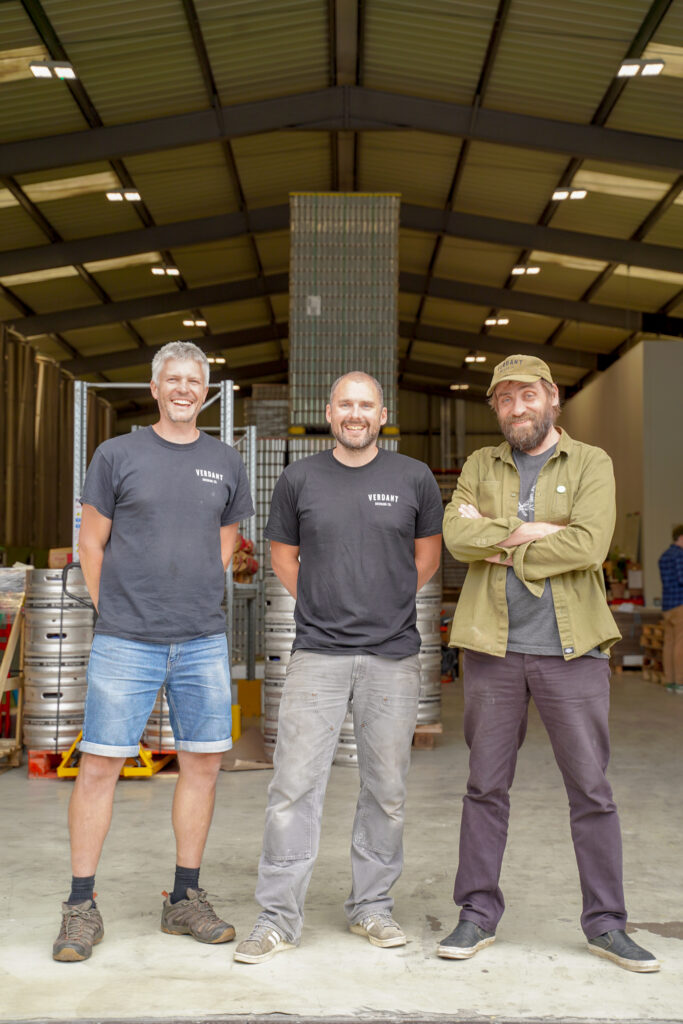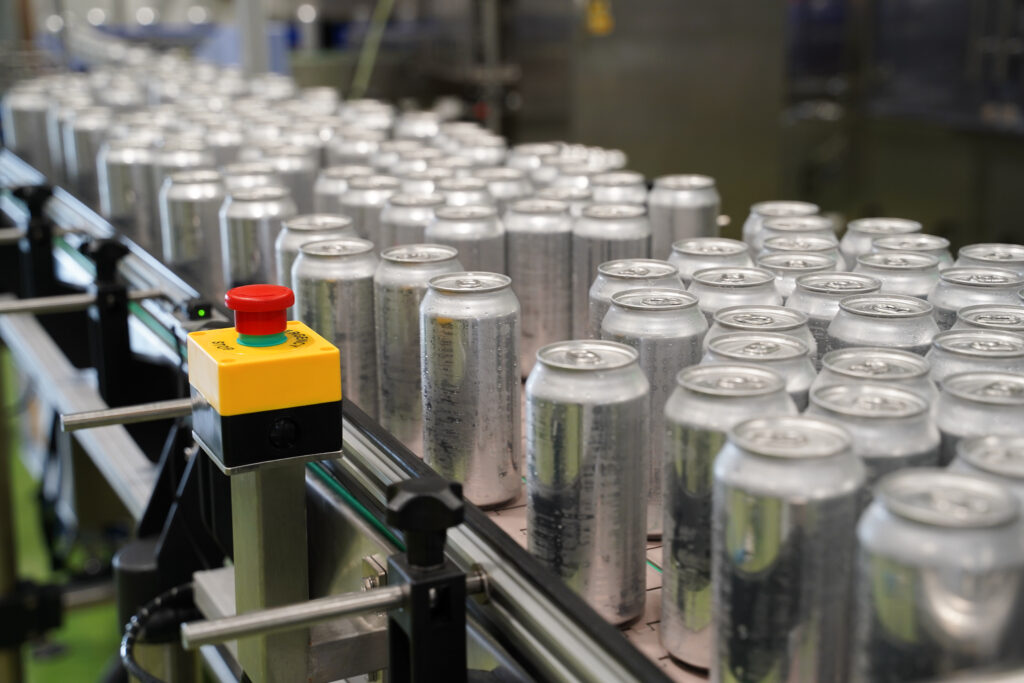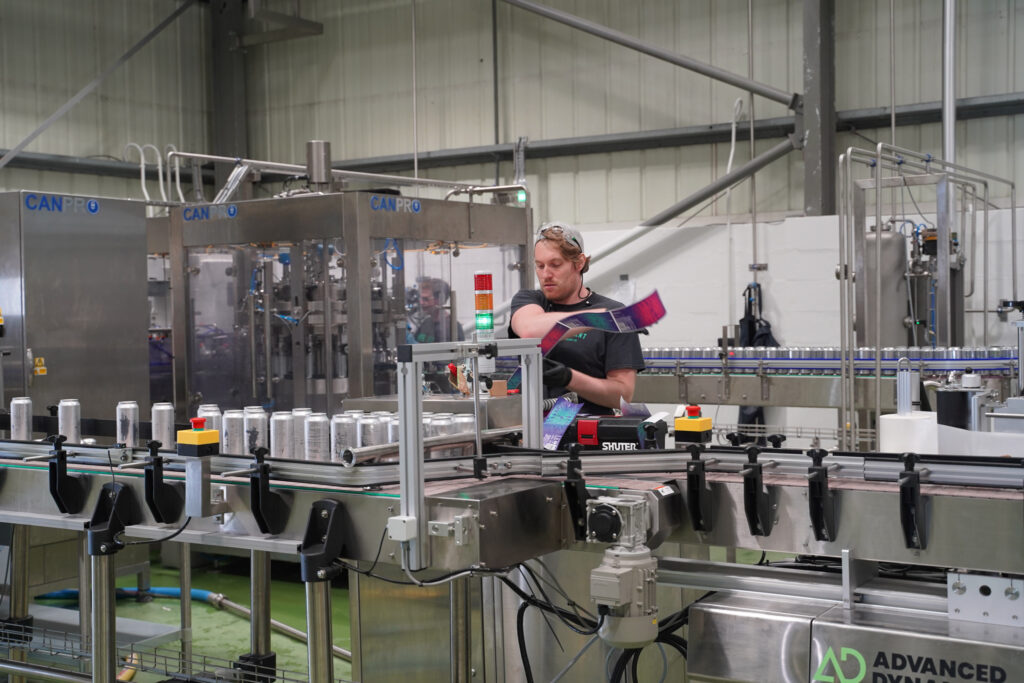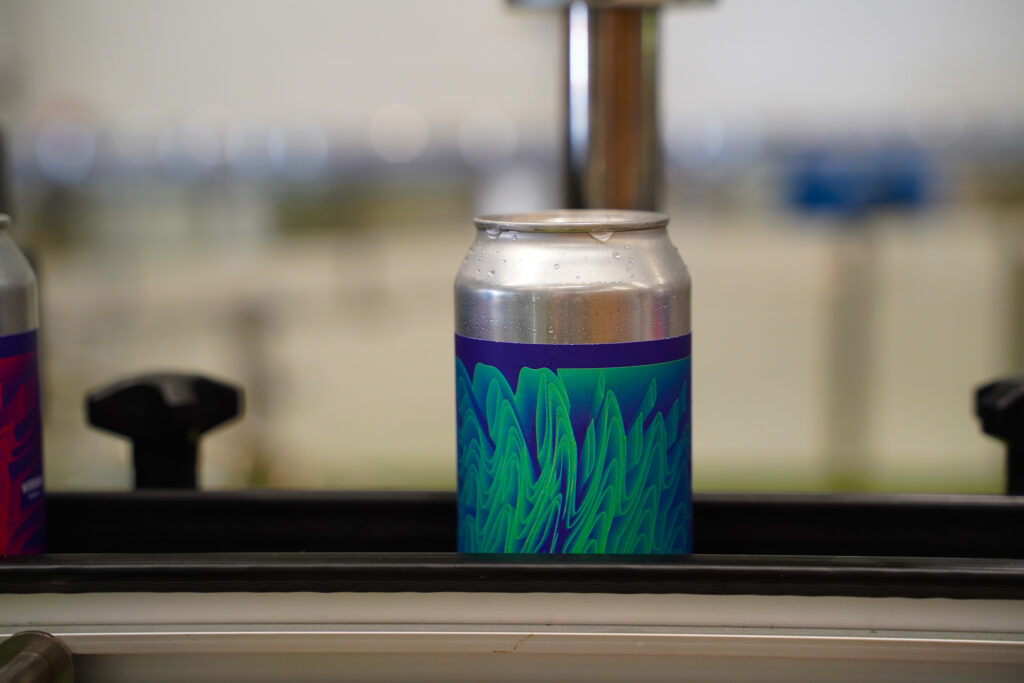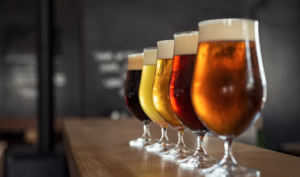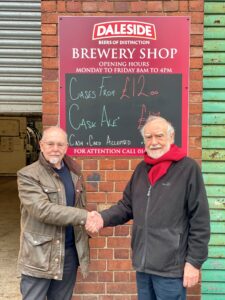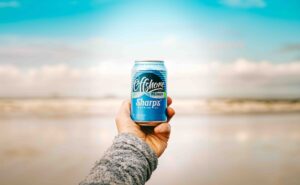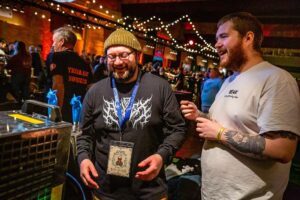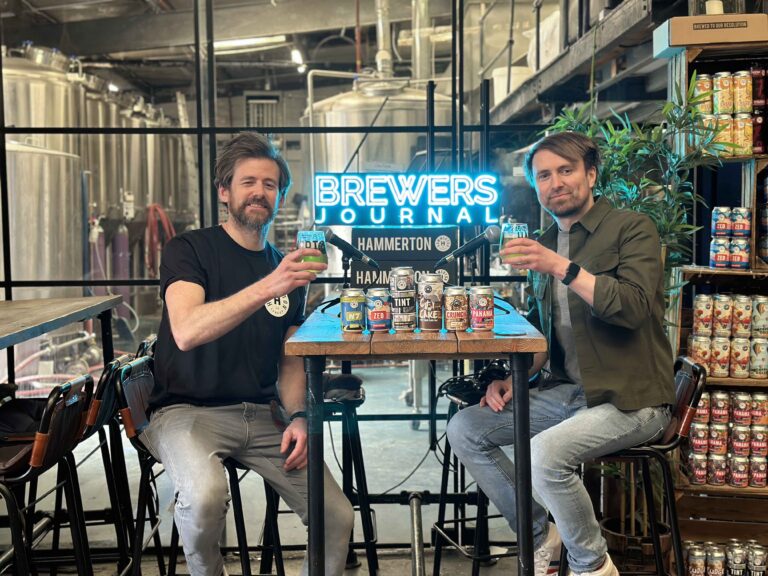A love of hoppy beers led James Heffron and Adam Robertson to start brewing their own back in 2014. Joined by co-director Richard White two years later, they’re producing world-beating hop-forward beers and in doing so, have gone on to become one of the most revered breweries the UK has to offer.
“Hey James, I’ve got an idea. How about we get the shark design from our beer printed on some facemasks?” asks Adam.
“I love it, why not!” James replies.
The team around them nod enthusiastically and the latest addition to Verdant’s merchandise store might just have been decided on there and then. T-shirts, snapbacks, tote bags. They are old news. The ways you can promote your brand in 2020 are markedly different to previous years but let’s be honest, 2020 is hugely different to what has come before. Whether we like it or not, well that’s a completely different matter.
The design to which Adam Robertson refers can be found adorning the striking keg badge and can label for ‘Even Sharks Need Water’, a 6.5% IPA showcasing Citra and Galaxy..
A bright yellow shark, complete with a mouth full of beautiful hops, flies across a jet black background. The design, along with the beer it promotes, is fantastic and stands out on shelves across the land.
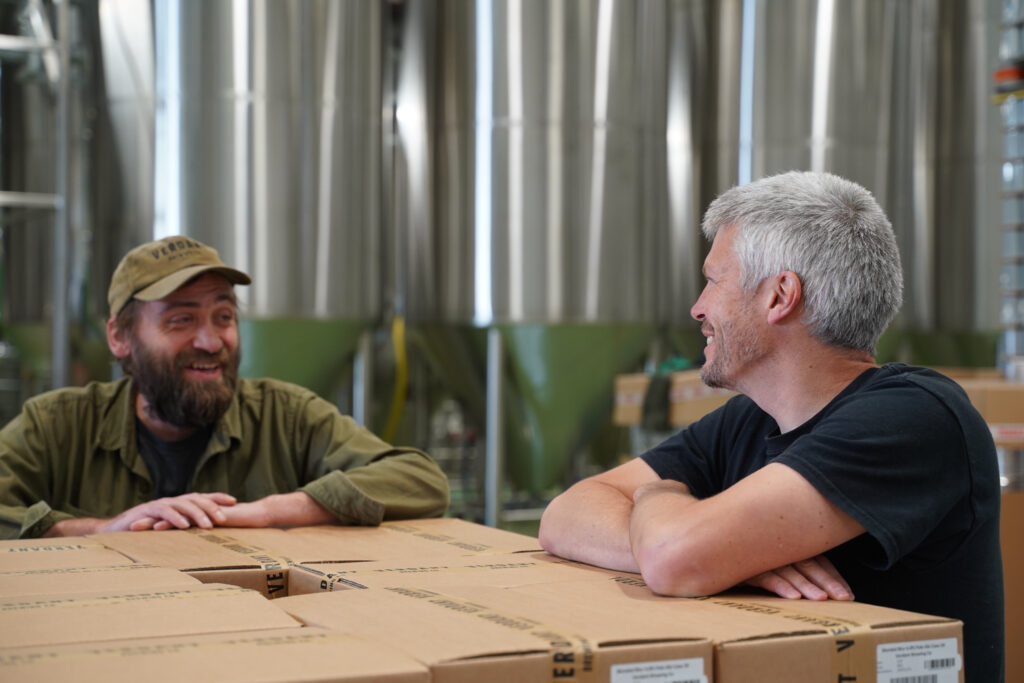
“We’ve got a lot of strong labels, I’m just happy to see them used in different ways,” exclaims James Heffron. Along with Robertson, the duo founded Falmouth’s Verdant Brewing Co back in 2014.
And a trait that has followed them from those early days is that unwavering sense of belief in what they’re doing and why they’re doing it. Robertson and Heffron, who would be joined by director Richard White at the tail-end of 2015, have approached each decision along the way with that same mentality.
“I don’t think we find things daunting. Since year two it has literally been like a dog on a lead dragging us, and you just go with it,” says Robertson. “You’re faced with having to make decisions rather than being worried whether they’re right or not.”
Heffron adds: “If your gut feels right about something, then just go with it. For me, that’s right up on the list of prerequisites of whether I do something or not.
“As Adam said, we have this dog called Verdant, which has always been running away and we just try to keep hold of it. The brand and the beers have got their own momentum. So it’s our responsibility to try and manage the direction of this beast.”
Six years in, it’s safe to say they’ve done a pretty fine job of steering the good ship Verdant. Even with the choppy waters of 2020 and all that has thrown at them.
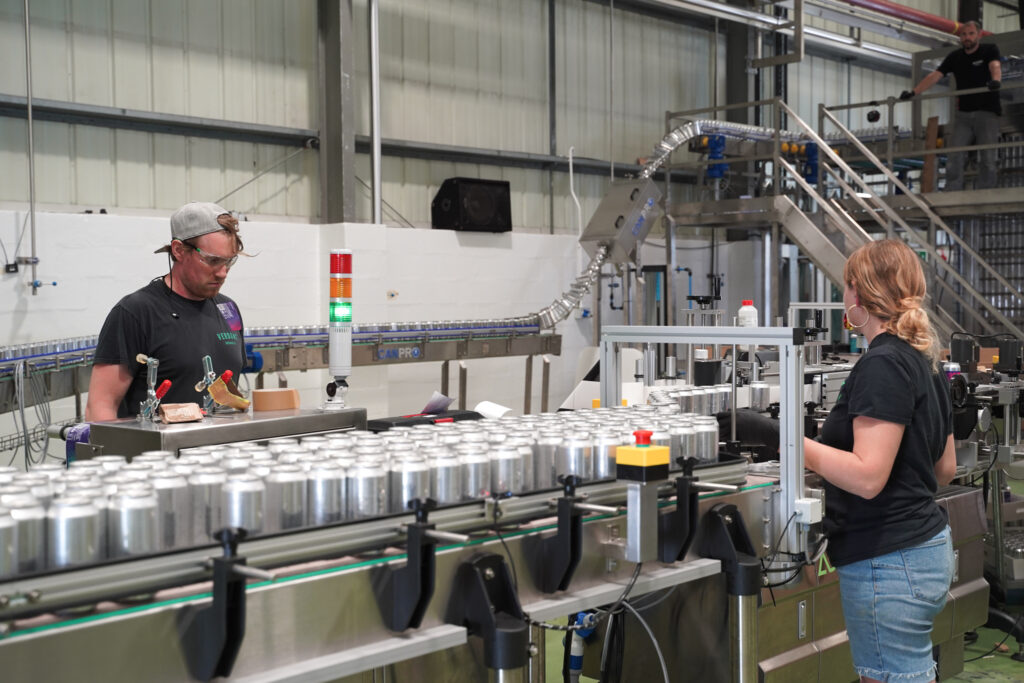
It’s late July and it’s all hands to the deck on the canning line for one of the brewery’s latest releases. Blended Blur is a 4.8% Pale Ale showcasing Loral, which hits you with orange flavours front and centre. It’s the first time the beer has been produced and, despite some Columbus being used for bittering, it’s a full-on expression of Loral and head brewer Heffron is particularly pleased with the results.
“I tell you what, I’m bloomin’ glad we have a lot of this hop on contract!” he laughs.
Verdant’s canning run is midway through the packaging of some 16,000 cans. The culmination of a double batch that, without stoppages, takes the team circa four and a half hours to complete.
“We still we really like having labels on our cans and haven’t taken the leap towards printed containers,” he explains. “So with that, you have to accept that labelling post-fill either works very well, quite well or is a right pain in the ass. And if it is pain in the ass, then the canning line run is a fair bit longer.”
The CanPro canning line was supplied by Moravek International. It sits proudly at one end of the brewery’s impressive new facility in Penryn. Located some three miles north-west of its old site, the team have swapped their automotive neighbours of old for a kids soft play centre that is currently shuttered by Covid-19 restrictions.
While the pandemic forced Verdant to make some major decisions about their business, they did so with that earlier sense of confidence that has successfully got them to where they are today.
“When everything hit, and lockdown was introduced, I suppose you could say I was really quite emotional,” Robertson reminisces. “It was scary, it was uncertain and we were still somewhat fresh to this new brewery of ours”
On-site engineers were called away to isolate, and the brewery shut down for two weeks to allow the team to gather their thoughts. “We reopened and fired up the non-commissioned canning line, and due to Rich’s hard work, we’ve managed to keep canning until the present day,” says Heffron.
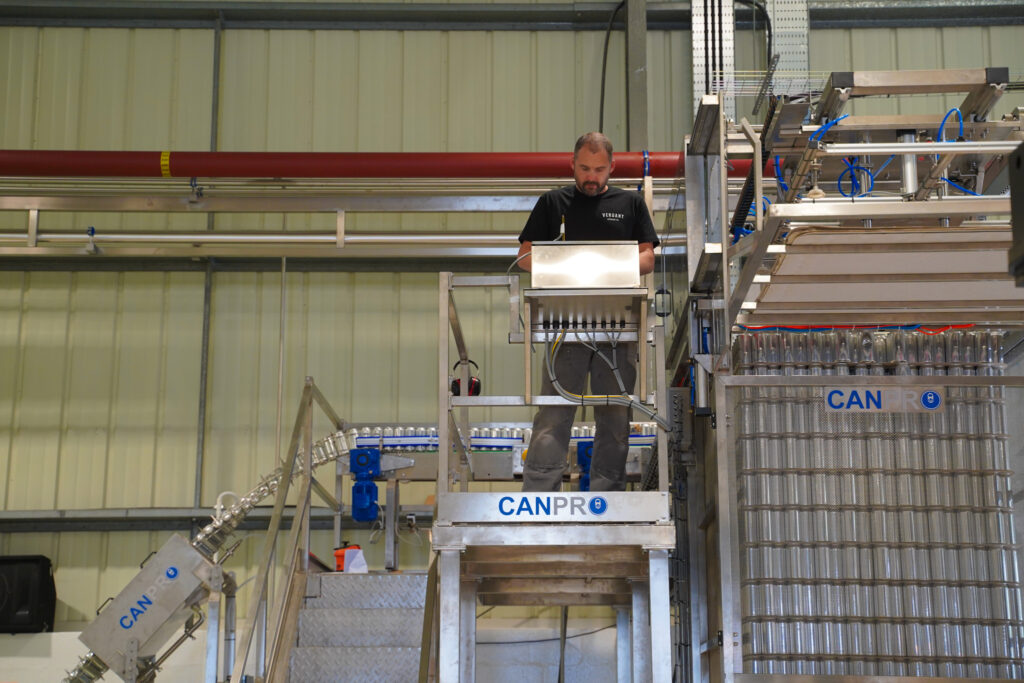
Thankfully the new line was commissioned in good time and such was the need to fire it up, the first packaged cans were coming off the machine 24 hours before the aforementioned engineers were called away to isolate.
“The cans have been flying ever since,” smiles Robertson.
None of the three directors at Verdant are natives of Falmouth, but it’s the town in which they all met. Bonded by a passion for five-a-side football, good beer and the desire to work together, Verdant came into being back in 2014.
The brand and the beers have got their own momentum. So it’s our responsibility to try and manage the direction of this beast,” James Heffron, Verdant
A skiing trip nearly two decades earlier would see Heffron meet a group from New Zealand. A bond was made and he agreed to visit their beautiful country on a backpacking trip in 1999. It is here he would meet his future wife Hagit who was also enjoying a similar visit. The couple would go on to mark the occasion returning to the country again in 2010.
“I just remember spending one day in the South Island, drinking beers brewed with Nelson Sauvin and then driving through Nelson Sauvin hop fields. With the mountains in the distance, the romance just almost killed me.
“So of course I came home and started brewing on the kitchen stove!”
Heffron had no previous professional brewing experience prior to starting Verdant. Instead, he boasts a passion for exploration, flavour and invention. Something that would lead him and Hagit to start their own street food business in Falmouth, Fal Falafel.
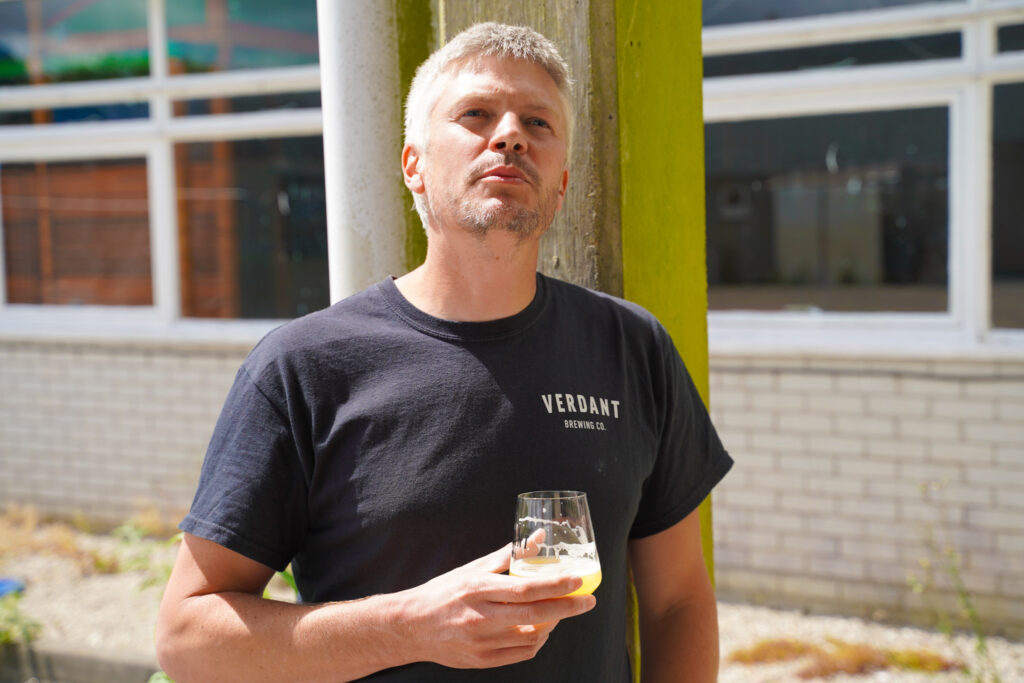
“The whole process of starting a company, even though it was very small, involves taking a step. You create a little brand, you create a product, and you invest some money,” he explains. “And that’s what burden is. Adam has done it himself with his own businesses, too. I think by having that in your back pocket makes starting a brewery a little less daunting.”
Heffron adds: “Back then I was making falafel and selling it to people in front of me. Now I’m making beer and sending it out to people further away. But I see similarities in both.”
While Nelson Sauvin and beers from the microbreweries of New Zealand opened his eyes to the world of flavour that exists within beer, Heffron would develop this passion thanks to the UK’s very own excellent breweries. Often after weekly five-a-side football games he’d play with future business partner Robertson.
“I remember the big grapefruit hit you got from a pint of Proper Job,” he recalls. We’d both drink it when we used to play football each week. Well, to be fair, Adam still plays.”
“Oakham Citra, Pale Fire from Pressure Drop Brewing and beers from The Kernel all played a big part for me,” says Robertson, who has a background in marketing and design.
“And Punk IPA, it’s important not to forget that,” adds Heffron.
The duo had a passion for beer and before long, it became evident that they wanted to make a go of it themselves. And although it was a major decision to make, Heffron says it was important to approach it head-on.
“Beyond time with family and friends, I don’t think there’s really anything better than starting an adventure,” he explains. “When I first moved to Falmouth I worked in retail, and I was made redundant twice. Starting the falafel business was a risk, but once you’ve taken a risk once, it’s easy to do it again.”
We were down the pub and thought – we need a name. Half an hour later, we had it!” Adam Robertson, Verdant
Heffron adds: “If you are really passionate, and believe in the quality of your product and where you’re coming from with it, then you’re got nothing to worry about and everything falls into place.”
A much-celebrated part of Falmouth’s nightlife is Beerwolf Books, a quirky, though incredibly popular, pub housed in a 17th century building that was once a customs house, packet ship station, working men’s club, post office and the house of Captain Bell and his family.
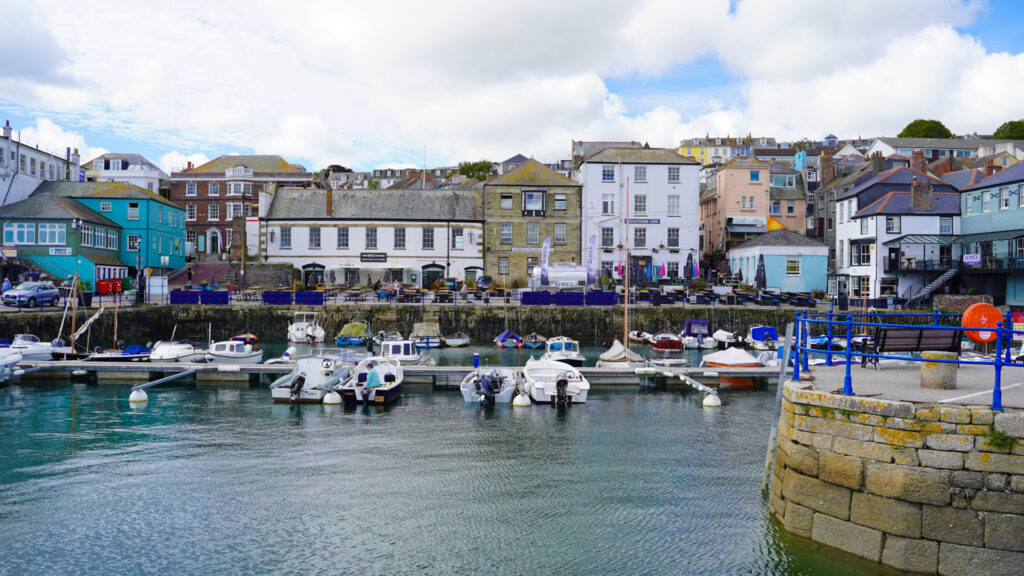
It is also the birthplace of the brewery’s name.
“We were down the pub and thought – we need a name,” says Robertson. “We mused, wow this is going to take a while but half an hour later, we had it!”
Heffron was familiar with The Adventures of Mr. Verdant Green, a novel by one Cuthbert M. Bede. The book focused on the various exploits of Green, a first year undergraduate at Oxford University.
“There was something about the word Verdant that stood out,” says Heffron. “Meaning green, and lush, we felt it was perfect for us.”
And that was that. Though the name has been the cause of varying degrees of amusement over the years.
“Early on people asked us why we hadn’t called the brewery ‘Cornish Brewing’ or something equally uninspiring,” laughs Robertson. “And then you have those that mispronounce the name. Put the word Verdant in a sentence and I’m sure you’ll pronounce it the correct way. It used to annoy me but no longer. It can be whatever you want it to be!”
“I love the fact it’s mispronounced so much,” says Heffron. “It means the the brand is vocalised far more often.”
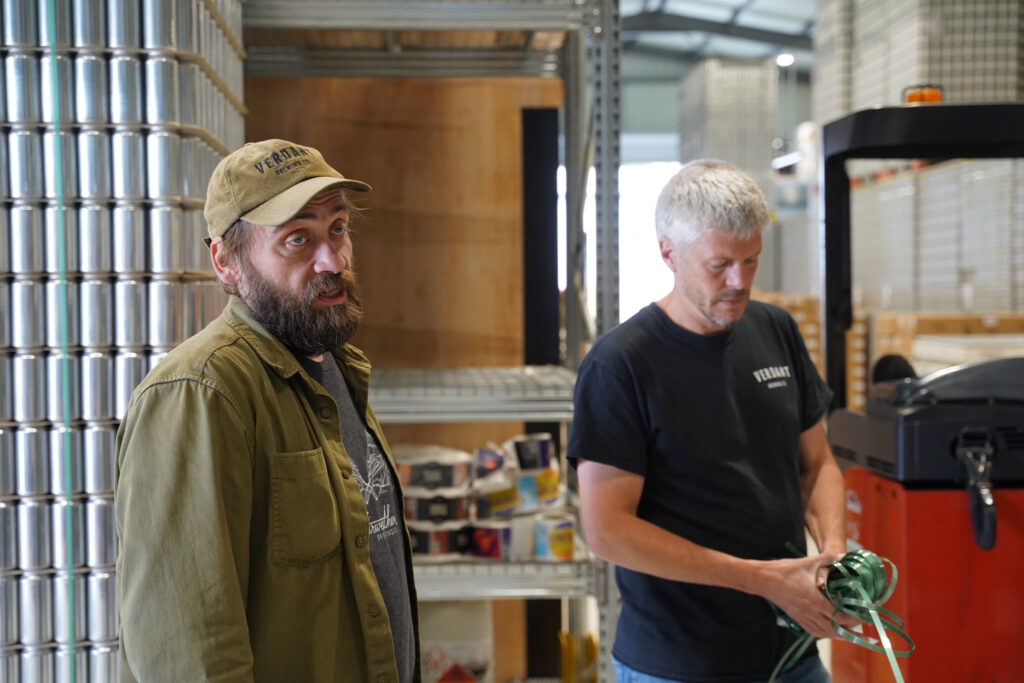
Heffron and Robertson’s initial forays into brewing took place in the former’s kitchen during the Autumn of 2014. Before long, they had moved to a humble shipping container that was rented for less than £200 a month.
Come 2015, Richard White had joined the group and by October of 2016, the team had up graded from an existing 200ltr setup to a 16HL system. Verdant were also named ‘Best New Brewer’ at the 2016 Ratebeer Awards.
Though they were in no mood to rest on their laurels and fast-forward two years, the trio would launch a super-successful crowdfunding campaign to fund further expansion, which would involve the investment in a new brewhouse, canning line and a move to their shiny current site in Penryn, which provides employment to a team of 20.
A total of 2017 investors would help Verdant raise £1.32m and enable the business to take the next major steps in its brewing journey. Located in the Parkengue Kernick Industrial Estate, the team is now very much at home at their new facility. And although the site is fully-specified, the addition of a taproom will add to the proposition in 2021.
“It has been great to approach this building as a blank canvas,” says Heffron. “We’ve been able to work with SSV Limited from an early stage to ensure that this site is the perfect fit for the brewhouse they supplied and installed.”
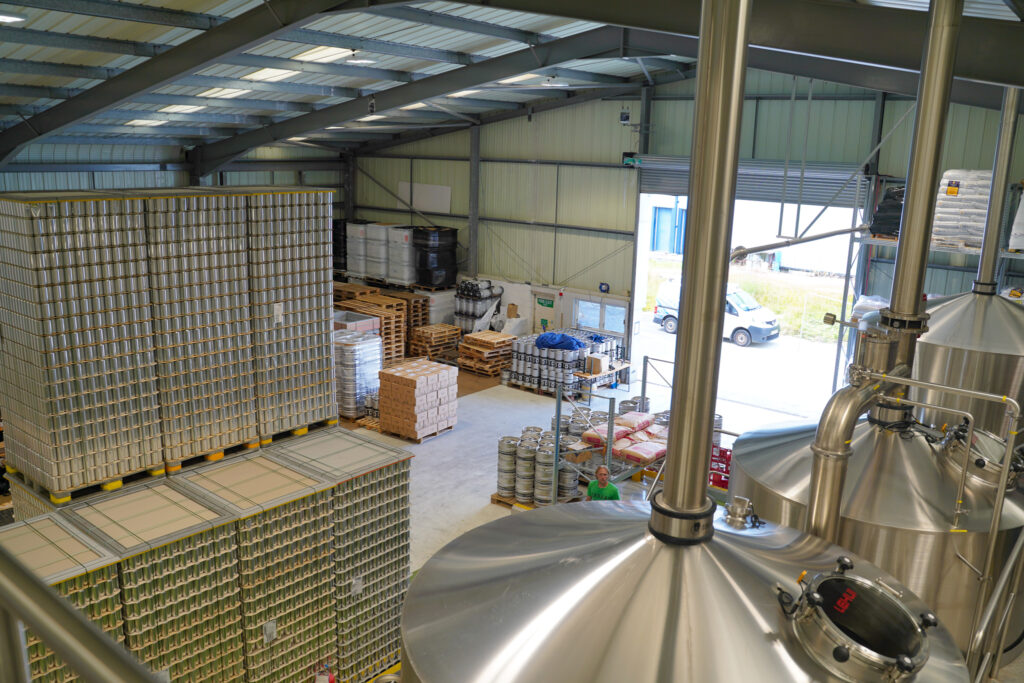
The centrepiece of the new facility is the 35HL brewhouse from SSV Limited. While they describe the brew length as “modest”, Heffron and the team are already testing the system’s capabilities.
“We’ve been knocking out 40, sometimes 45HL per brew,” he says.
“The original plan was to triple brew 105HL into one of the FVs, giving it ample headspace for the huge krausen beers fermented with our house strain have. But here we are filling it right to the top where it’s almost touching the sprayball so out comes the antifoam. Anyway, hey ho!”
Being part of a brewery is like life itself. It is full of huge lessons, and it’s a series of learning curves. You’ve just got to be willing to take them,” Adam Robertson, Verdant
Heffron took on the role of specifying the equipment for the new brewery, while Robertson continued working on marketing, design and sales. White, a former domestic and commercial electrician, handled project and site management.
“Rich is super practical and has a great engineering head on him,” he says. “Having someone like him on board during this process has been invaluable.”
Enter the Penryn brewery and you pass a brand new bulk CO2 system alongside two malt silos. These house Extra Pale from Crisp Malting and Golden Promise from Simpsons Malt, the primary ingredients of Verdant’s malt bill and often ones that are blended together slightly to achieve the colour the brewer desires.
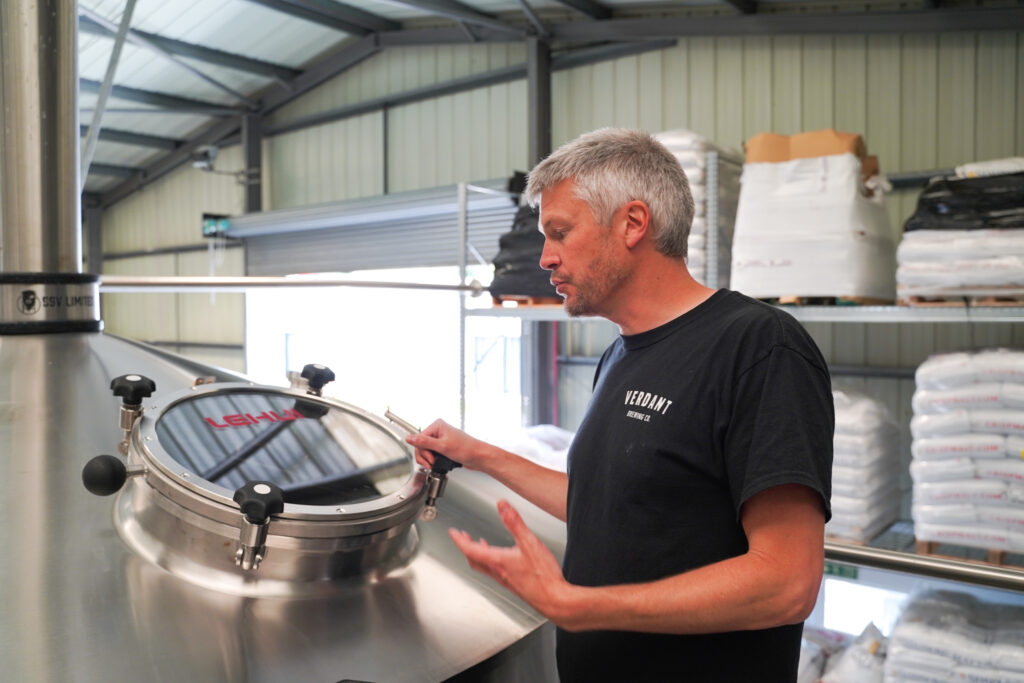
Heffron was exacting of his demands from equipment partners that include SSV Limited, Alfa Laval and Moravek.
“I think we pushed SSV when it came to the design. We wanted two lauter tuns, and three jackets on the MCV, which is somewhat unusual and they rose to the challenge,” he says.
The primary lauter tun is one of Heffron’s favourite elements of the new system.
“It has a lovely wide bed so you keep the grain bed thin to aid run-off,” he says. “You can throw a Double IPA in there with 10 to 20% flaked additions and it just laughs at you saying is that all you’ve got?”
The team also wanted a way to chill the wort in a single pass from the kettle to the whirlpool. Much of the whirlpool process is carried out at 80C, particularly for New England styles and the solution was to integrate a large in-line shell and tube heat exchange between the kettle and whirlpool. By knocking 20 degrees off they can create huge hop saturation without the addition of harsh bittering.
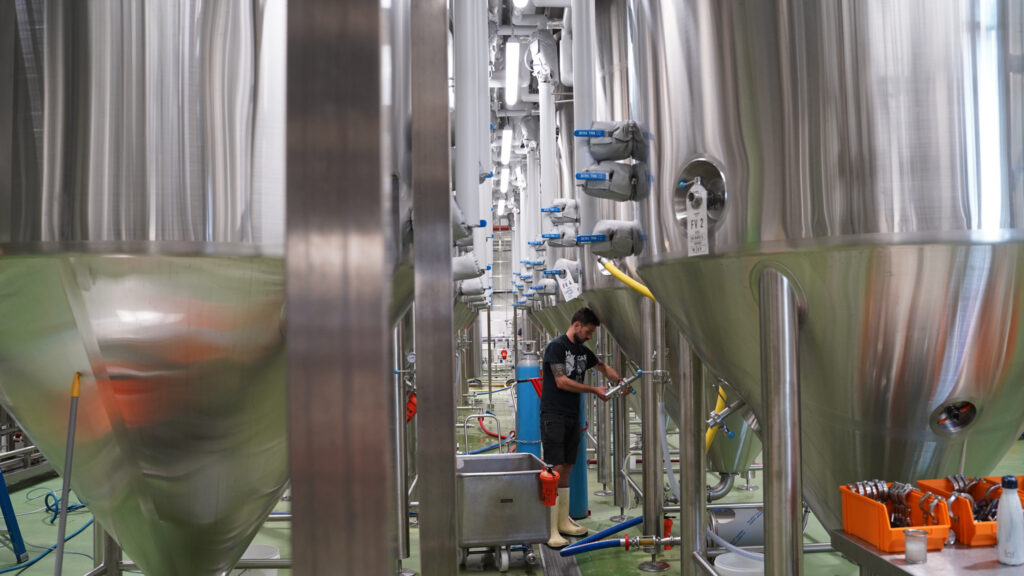
A central gantry provides access to FVs 1-12, affording sprawling views of the whole facility. You’re a good six metres up at this point so a safety gate was installed to allow for the secure addition of hops and yeast direct into the vessel’s manway.
Back on ground level, Heffron highlights the intricate pipework that exists under the brewhouse and fermenter gantry.
“It’s pretty amazing under there. There’s something like 400 valves in that part alone,” he exclaims.
Three CIP units across the site individually handle the brewhouse, tanks and the canning and kegging operations.
Another major addition to the Verdant armoury is the investment in a centrifuge from Alfa Laval. A system, Heffron believes, is helping improve the brewery’s output across the board.
“A centrifuge is tough to get to grips with, but reaps very large rewards,” he says. “We never chose to have one so we could increase yield, instead it was always to improve the beer, to refine the beer and hopefully improve the hop character present in them, too.”
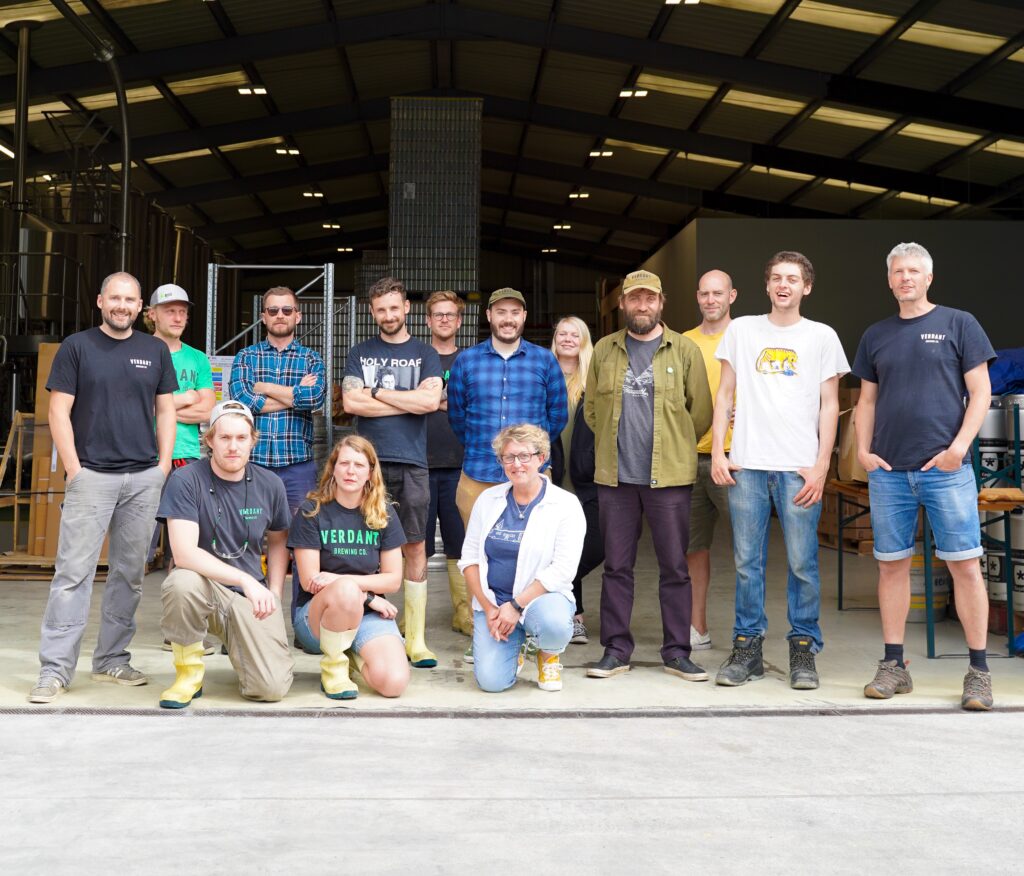
Heffron has enjoyed learning the ropes with the new equipment, but says misguided preconceptions regarding centrifuge technology exist in the industry.
“I remember being told on separate occasions that centrifuges will reduce the flavour in your beer as you are simply spinning the flavour out. I thought no, you’re using it wrong,” he says. “So we went down this rabbit hole of trying to specify the centrifuge to the point where we could put the whole contents of an FV of Double IPA through it and not just a blended portion of the solids of the cone.
“In my mind’s eye you have all this flavour that you normally throw away, so why not spin all the liquid out of the hops and keep it in the beer? I think that whole argument of it losing flavour is wrong, “ says Heffron. “Anyone who works in the cellar of a hop-focused brewery will know how wonderful the hops smell that have been left behind in the cone of an FV. Why not attempt to spin that flavour into the beer, rather than simply chuck it down the drain”
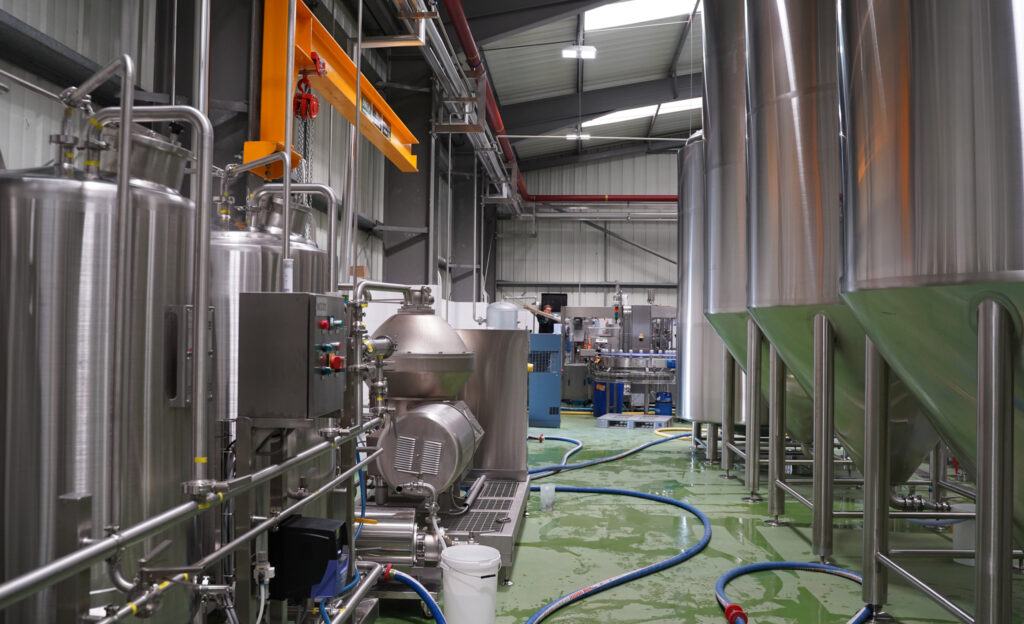
He adds: “The centrifuge has been the most challenging element of this brewery but also the most exciting part at the same time. And within the last couple of months we’re really beginning to own it and make it do what we want it to do.”
The brewery has ample fermentation capacity at present but the facility has been designed to allow for expansion if needed.
“It’s simply ridiculous spending so much money on a quality brewery floor and drainage if you’re not going to leave enough space for another row of tanks,” he smiles.
The team are leveraging the new facility to output three beer releases each week. Some of these are new launches, such as Blended Blur or the Double IPA Unconventional Tactics, while others are rebrews of favourites such as Fruit Car Sight Exhibition and Headband.
Although Verdant has brewed more than 100 different beers in its time, Robertson is keen to consolidate its approach to releases going forward, especially with a growing export market that includes territories such as Norway, Denmark, Germany and Spain to Thailand, Singapore and China.
“We’re trying to cut down on producing so many new beers. We want to have core range and a series of rotational releases,” he explains. “Personally I think the whole industry has made a rod for its own back with too many new beers that are too similar to previous ones.”
Heffron adds: “We love all types of beers, but we entered this business through the love of IPA. So it’s the hazy pales, IPAs and West Coast we’ll continue to focus on.”
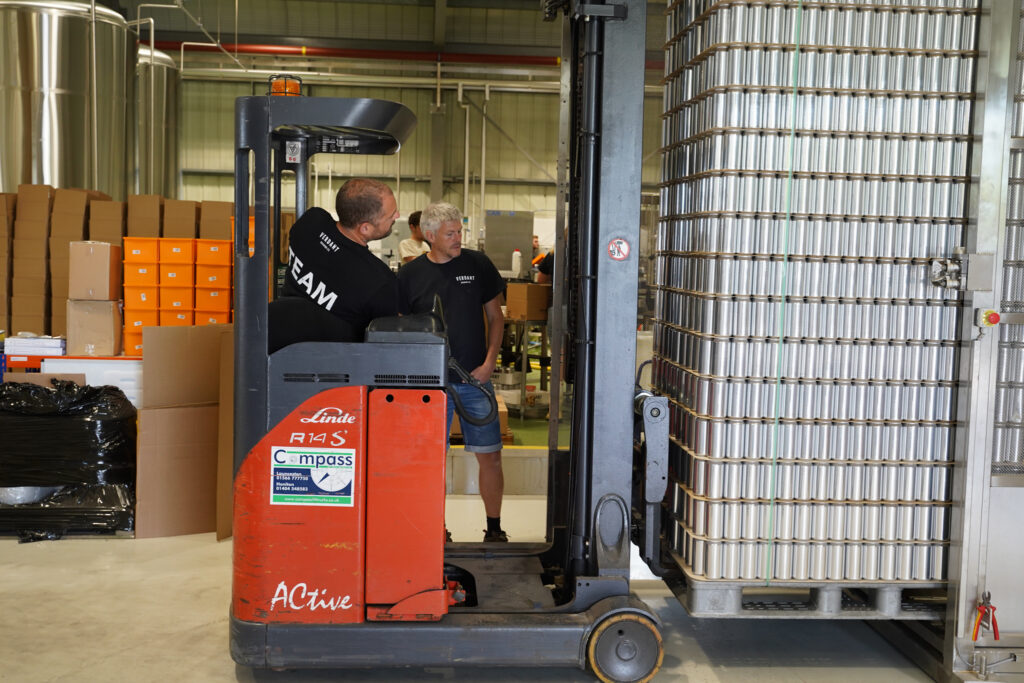
Among a myriad of beers produced in the last six years, Heffron holds Headband as his crowning glory.
“When it’s on song, it is as good as anything out there,” he states.
Earlier releases of the beer were drier and less juicy than they are now. Working full-time jobs meant the team were solely using US-05 yeast where they now blend it with Lallemand New England yeast. They also admit that they hadn’t perfected their water chemistry or dry-hop processes in those early days.
Headband has come a long way since its inception, though it still retains the original hop bill of Mosaic, Citra, Chinook and Columbus. These days it’s a beautifully hoppy beast with a big tropical nose and a hint of dankness to balance out the flavours. One factor which is often overlooked is the malt bill. The Munich and Crystal malts have given Headband the burnt orange shade of a sunset, and sweet caramel vibes to accompany the candied orange flavours.
“We love that beer, but it is also the one of the trickiest beers to produce too,” says Robertson. “There is a little window where it’s A1. Of course, it is still very nice either side of it, but every time you brew a beer it doesn’t matter if all the process points are the same, there can be slight variations owing to the nature of the yeast.”
He adds: “The colour can go a little too dark for me because of that orange thickness and if it’s too dark it can look oxidised, so maintaining the appearance of that beer is key.”
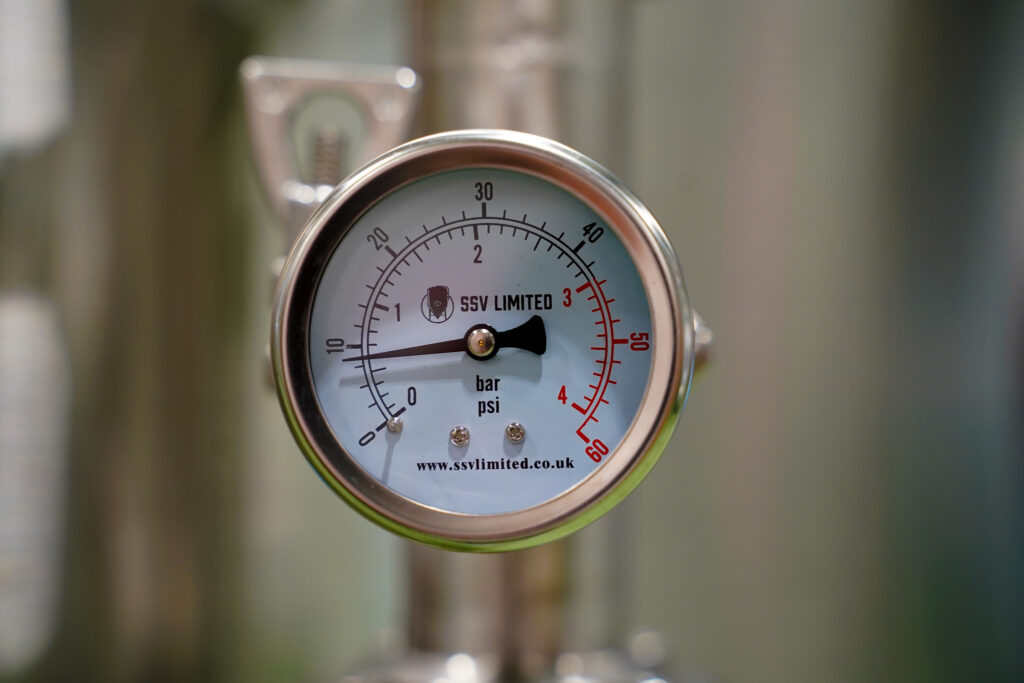
While Headband holds such a special place in the hearts and minds of Heffron, Robertson and team, it doesn’t actually feature their favourite hop – Nelson Sauvin.
“We all have one favourite hop and that’s Nelson,” says Heffron. “And if anyone disagrees with us then they’re wrong!”
He adds: “When it comes to Nelson beers, I take a sniff and for the duration of that same sniff, a whole world of different flavours emerge. You don’t only get one and stop, it just keeps on going.”
While they have produced beers in a variety of styles, team Verdant have proudly nailed their colours to the mast of hop-forward pale ales and IPAs. Their well-placed strength of conviction in the beers they brew even goes as far as politely informing the yeast producers they purchase from that they should be using and promoting the brewery’s own strain.
“I recall meeting Rob [Percival, technical sales manager for Lallemand Brewing and unofficial member of team Brewers Journal] at a tradeshow in Germany,” says Heffron. “They had just released a New England yeast and I cheekily told them they were wrong, and they should have worked with ours.
“I offered them access to it and two years later, here we are with the strain being available to homebrewers and in wholesale, too!”
With that, LalBrew Verdant IPA was born. According to Lallemand, it was specially selected for its ability to produce a variety of hop-forward and malty beers. Prominent notes of apricot and undertones of tropical fruit and citrus merge seamlessly with hop aromas.
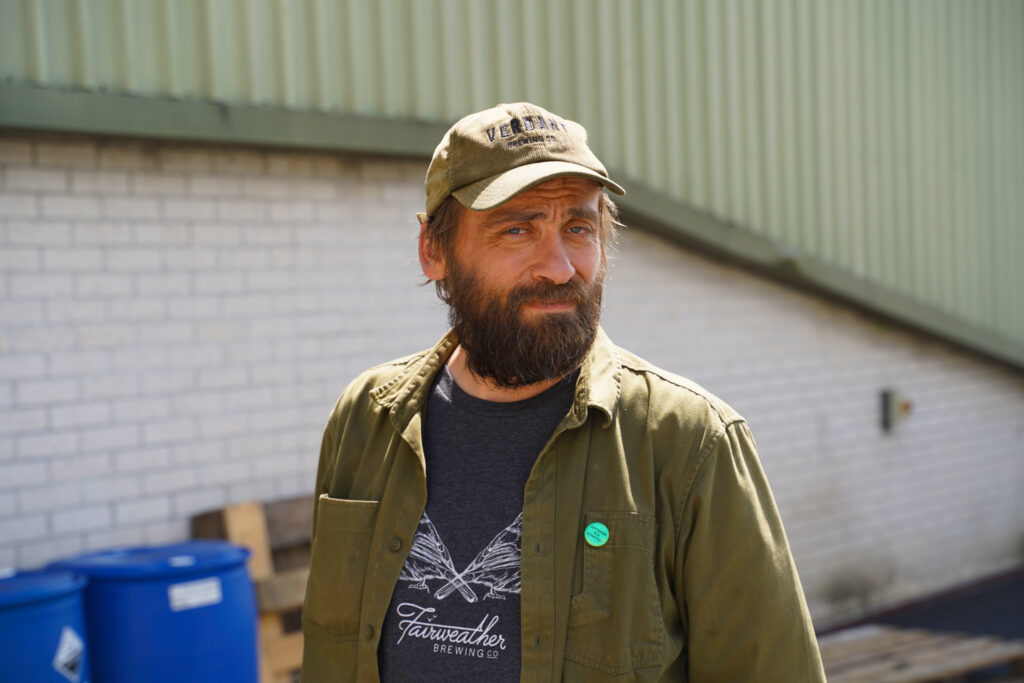
With medium-high attenuation, the LalBrew Verdant IPA strain leaves a soft and balanced malt profile with slightly more body than a typical American IPA yeast strain.
Verdant’s head brewer says he has no problems in being so open with the wider beer community, despite being initially hesitant.
“We obviously work very hard developing our recipes and processes but decided this was an opportunity to truly become part of the community,” Heffron says.
“It’s also crucial to understand that you can give your exact recipe to someone, and tell them what to do, but it will always taste different to how you do it. Either way, I think people appreciate knowledge sharing, and the ability to try new things.”
And it’s that desire to try something new, and not to be afraid of doing so, which has led Verdant to the lofty heights they continue to hit.
“Working at a brewery is a never-ending cycle. But I love it, absolutely love it. I wouldn’t swap it for any other job,” says Heffron.
“Being part of a brewery is like life itself. It is full of huge lessons, and it’s a series of learning curves,” adds Robertson. “You’ve just got to be willing to take them.”

